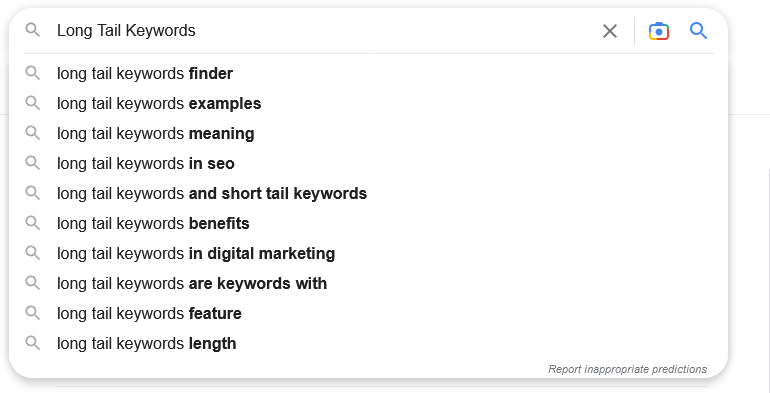You may be starting out with a brand new website, have a low Domain Authority blog, or simply be looking for a new strategy to drive traffic to your lovely website.
If you’re unsure what the Domain Authority of your blog is, visit the Moz open site explorer and enter your url in the search bar to check what your DA is.
DA is measured on a scale of 1 to 100, with 1 being no authority and 100 being the highest authority a site can have.
Google and the majority of search engines give more credibility to sites with higher DA’s, and the reason you may not be ranking for many keywords could be your site has a lower Domain Authority than others in your niche.
Luckily, there is a solution that you can employ to rank for keywords even with a low DA.
That solution is called long-tail keyword targeting, and it is a key strategy I use in driving traffic to my own and my clients’ websites.

What is long tail keyword targeting?
Long tail keyword targeting means researching and writing articles based on keywords that are 3+ words long. Instead of targeting the most general keyword you can think of, make it more specific by adding modifiers to the end of it.
This will make your keyword target longer and may reduce the volume of monthly searches, but the key is that it also reduces competition for that keyword and makes it more likely you will rank.
Find out the best long tail keywords for your website in this tool:
Why does long tail keyword targeting work?
This targeting method works because it makes your webpage so specific, that when someone makes a search including your exact keywords, Google is more likely to show your very specific webpage, even if it is a webpage with low domain authority, over a webpage that has high DA but a less specific target.
Simply put, this strategy gives you an edge to rank for your long tail keyword phrase because you are being more specific than the competition.
How to research and start using long tail targeting as part of your own SEO strategy
How do you start using this in your own strategy? Good question, we’ll go into the details below.
There are several tools I use to implement this strategy on websites I work with, namely the Adwords Keyword Planner and the Moz SEO Chrome Extension
Research to find long tail keywords you can rank for:
1. Use the Adwords Keyword Planner to find keywords with at least 3 words or more and over 100 search volume/month.
2. Once you have a list of possible keywords, check your own sites’ Domain Authority using the Moz open site explorer
3. Next, open a new Chrome tab and search for the long tail keywords you found in step 1.
4. When you find a page with half or more of the sites below your own domain authority for the specific long tail keywords, you have found a winner!
5. Write the keyword down, then use it in your blog post title and url.
6. Write your post around the keyword, but make sure not to keyword-stuff. Make it natural and very useful to the reader for the best results.
7. Congratulations, you’ve just set up your very own long tail keyword targeting campaign.
8. Check back in a few months to see what you’re ranking for.
9. Rinse and repeat for best results.
Here is an example of a long tail search keyword, www-survey-walmart.com one of my sites is beginning to see small results for:
The reason it is gaining a small amount of traffic, is that the keyword is very specific, and 4 words long. I used the exact above strategy to find this keyword, and gain some initial traction.
Good luck, and let us know in the comments below if you start targeting long tail keywords for your own website and what results you see!
By Stacy Caprio, Blogger, KrogerFeedback